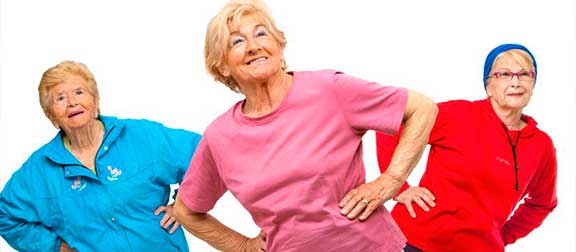Exercise is a chief element to staying physically fit and healthy. According to WebMD, a leading source of health and medical news and information, “Being fit is important to everyone. You can benefit from physical activity even if you think of yourself as ‘elderly’ or you already have conditions such as osteoarthritis or heart disease. Being more active may improve your quality of life and can prevent or delay disability.”
For seniors who are not in tiptop physical condition, vigorous exercising, such as long-distance running, CrossFit and extreme cycling, may be generally unsuitable. Intense workouts, especially for those who are just starting out, may cause soreness. Extreme workouts can also bring on complicated side effects as our bodies become more fragile as we age. However, moderate endurance exercises such as walking briskly, swimming, playing tennis, dancing, light to moderate weight lifting, and doing aerobics and yoga can help build endurance and prevent bone loss in seniors.
Light to moderate exercise is mainly encouraged to keep most seniors strong and to prevent disuse atrophy caused by a lack of muscle use. Seniors should avoid being sedentary and exercise regularly to maintain physical strength. Should one seek the help of a personal fitness trainer, choose only those who are certified, insured, and professional. For an exercise class, verify that the instructor is certified to teach, and that workout isn’t too intense.
To determine whether an exercise is moderate or vigorous, use this as your guide: During moderate exercise, you should be moving while maintaining the ability to speak. If you cannot speak without having to stop for a bit to catch your breath, the workout is considered vigorous.
Before beginning any exercise regimen, seniors should always seek the advice of a medical doctor to confirm that the type of exercise they’ve chosen is safe and beneficial. Together, patient and doctor can determine which activity level is best. It is optimal for beginners to start slowly and build endurance to avoid bodily strain. Those suffering from chronic health conditions, such as arthritis or diabetes, should tailor the type of workout and level of intensity to their abilities. Always heed the doctor’s advice to avoid injury.

